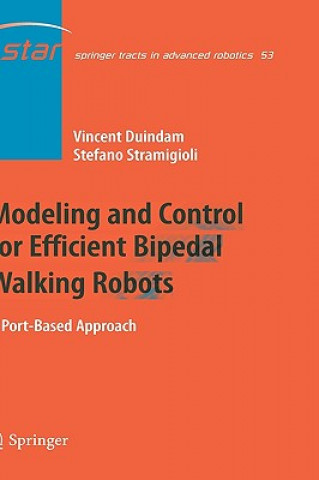
Doručenie
Nákupný poradca





Nehodí sa? Žiadny problém! U nás môžete do 30 dní vrátiť
 Darčekový poukaz
v ľubovoľnej hodnote
Darčekový poukaz
v ľubovoľnej hodnote
S darčekovým poukazom nešliapnete vedľa. Obdarovaný si za darčekový poukaz môže vybrať čokoľvek z našej ponuky.
Modeling and Control for Efficient Bipedal Walking Robots
 Angličtina
Angličtina
 467 b
467 b
30 dní na vrátenie tovaru
Mohlo by vás tiež zaujímať


Walking robots are complex machines with many degrees of freedom. Designing efficient controllers for such robots can be a daunting task, and the differential equations by themselves usually do not help much when trying to understand the dynamics. Still, research on passive dynamic walking robots has shown that it is possible to make robotic mechanisms walk very naturally and efficiently without using any control! The gap between theoretically well-understood position-controlled walking robots and experimentally-designed uncontrolled passive-dynamic walkers is nevertheless large, and extending a passive-dynamic walker to be more robust and versatile is non-trivial.§The purpose of this work is to present a set of mathematical tools that can simplify studying robotic walking motions and designing energy-efficient controllers. The authors extend classical dynamic modeling methods and view robots and controllers as energy-exchanging physical systems, which forms the basisof the so-called port-based approach. They show how such methods can be used to analyze walking mechanisms, find efficient walking trajectories, and design controllers that increase robustness and stability with minimal energy cost. Extensive examples and illustrations are used with the objective to make the mathematics intuitive and accessible to everyone with an engineering background.
Informácie o knihe
 Angličtina
Angličtina
Kategórie




 Ako nakupovať
Ako nakupovať




























